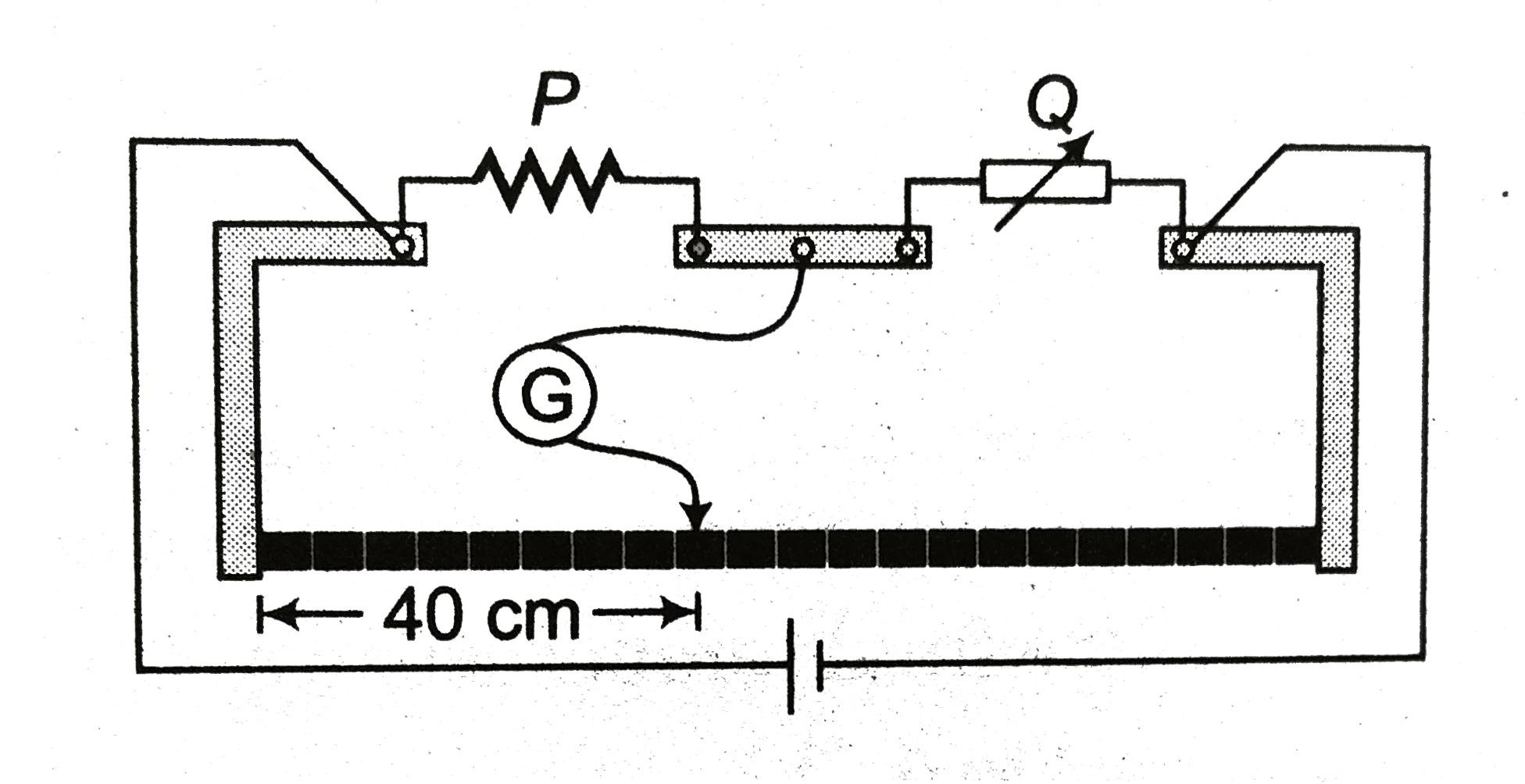With resistances P and Q in the left and the right gap respectively of a metre bridge, the null point divides the wire in the ratio 3:4 . When P and Q are increased by 20Ω each, the null point divides the wire in the ratio 5:6 . The values of P and Q are
30Ω,40Ω
20Ω,40Ω
30Ω,80Ω
20Ω,20Ω
The correct Answer is:A
For balanced bridge, XR=lxlr
∴PQ=34
∴3Q−4P=0 .... (i)
Now, P+20Q+20=56
∴5Q−6P=20 ...(ii)
From equation (i) and (ii), we have,
P=30Ω and Q=40Ω
Topper's Solved these Questions
- BOOK - NIKITA PUBLICATIONCHAPTER - CURRENT ELECTRICITYEXERCISE - Multiple Choice Questions314videos
CURRENT ELECTRICITY
- BOOK - NIKITA PUBLICATIONCHAPTER - COMMUNICATION SYSTEMSEXERCISE - Multiple Choice Questions (Examples for Practice)8videos
COMMUNICATION SYSTEMS
- BOOK - NIKITA PUBLICATIONCHAPTER - ELASTICITYEXERCISE - MCQ314videos
ELASTICITY
Similar Questions
With resistances P and Q in the left and right gaps of a metre bridge, the balance point divides the wire in the rati 1/3. When P and Q are increased by 40Ω, the balance point divides the wire in the ratio 3/5. The values of P and Q will be respectively
View SolutionEqual lengths of wires A and B are connected the left and the right gap respectively of a meter bridge. The null point is obtained at 0.4 m from the left end of the wire. If the diameters of the wires A and B are in the ratio 2:3 . Then the ratio of specific resistances of the materials of the wires will be
View Solution
Knowledge Check
- Question 1 - Select One
With resistances P and Q in the left and right gaps of a metre bridge respectively, the null point divides the wire in the ratio 1 : 2 . If P and Q are increased by 20Ω each, the null point divides the wire in the ratio 3 : 4, then the resistances P and Q are given as :
AP=10Ω,Q=10ΩBP=10Ω,Q=20ΩCP=40Ω,Q=10ΩDP=20Ω,Q=40Ω - Question 2 - Select One
Two resistances X and Y in the left and right gaps of a metre bridge give a null point dividing the wire I the ratio of 2:3. When each resistance is increased by 30Ω, the new null point divides the wire in the ratio of 5 : 6. What are the values of X and Y ?
AX=20Ω,Y=30ΩBX=30Ω,Y=20ΩCX=10Ω,Y=30ΩDX=30Ω,Y=10Ω - Question 3 - Select One
With resistances P and Q in the left gap and right gap respectively, of a meter bridge. The null point is obtained at 60 cm from left end. When Q is increased by 10Ω the null point is obtained at 40 cm from left end. The values of P and Q are
A12Ω,8ΩB8Ω,12ΩC8Ω,8ΩD12Ω,12Ω
Two resistors R1andR2 are connected in the left gap and the right gap of a metre bridge, and the null point is obtained at 20 cm from the left. On interchanging the resistors in the two gaps, the null point shifts by
View SolutionTwo resistors, X and R, are connected in the left gap and the right gap of a metre bridge, and the null point in obtained at 20 cm from the left end. With X+24Ω in the left gap and the same resistance R in the right gap, the null point is at the centre of the wire. Then, X is equal to
View SolutionIn a metre bridge, the gaps are closed by two resistance P and Q and the balance point is obtained at 40cm. When Q is shunted by a resistance of 10Ω, the balance point shifts to 50cm. The values of P and Q are.
 .View Solution
.View SolutionIn a meter bridge the null point is obtained at the middle point of the wire. If in one gap the resistance is 10Ω, then the value of resistance in the other gap is :–
View SolutionTwo resistances of values 20Ωand20Ω are introduced in the left and right gaps of a metre bridge. What is the shift in the null point if a resistance of 40Ω is connected in series with the resistance in the left gap ?
View Solution

